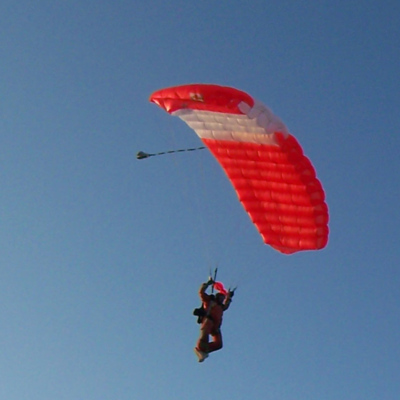Recommended Posts
AndyMan 7
Quoting Bill Booth:
Quote
I just went back and did a side by side pull test with our standard mini riser and the Miniforce riser. The set-up was a single riser, with the yellow cable through a short stainless housing. Here are the results (average, 3 tests each weight):
250 lbs. load - Standard = 2.0 lbs / Miniforce = 1.0 lbs.
500 lbs. load - Standard = 3.0 lbs. / Miniforce = 2.0 lbs.
750 lbs. load - Standard = 5.0 lbs. / Miniforce = 3.5 lbs.
1,000 lbs. load - Standard = 8.0 lbs. / Miniforce = 6.0 lbs.
So, if a 200 lbs. jumper was spinning at 5 "G's", (500 lbs. on each riser) the miniforce riser equipped rig would require 2 lb. less pull force to breakaway...or 4 lbs. vs 6 lbs., plus housing friction. I doubt the average jumper would be able to tell the difference.
_Am
You put the fun in "funnel" - craichead.



.thumb.jpg.4bb795e2eaf21b8b300039a5e1ec7f92.jpg)
It seems to me that friction of cables inside curving cable housings would be a substantial part of the total resistance. I don't know what the facts are, though.
You and I disagree about the distribution of drag forces acting on the cutaway cables in actual use, but we're both in "seems to me" mode. Do you know of any tests, studies, or manufacturer's statements that address the issue?
Thanks,
Mark
Share this post
Link to post
Share on other sites